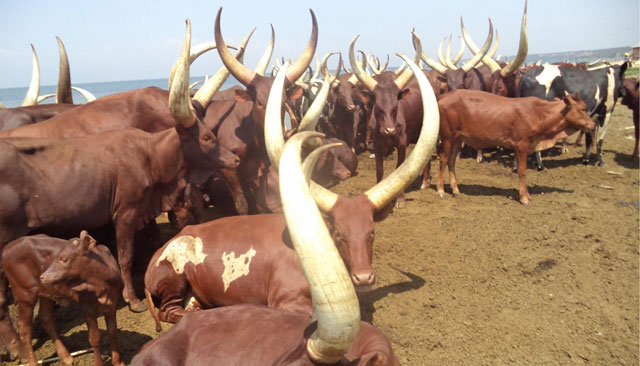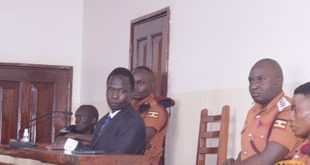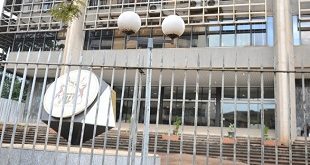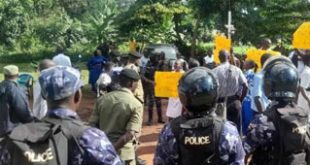
Kampala, Uganda | THE INDEPENDENT | There are increasing calls for conservation, preservation and protection of indigenous livestock breeds, especially cattle to avoid their extinction.
The animals are increasingly declining in number as more and more farmers go for crossbreeds to increase the output of livestock products, mainly milk and beef. There is fear that farmers in Uganda and other African countries are going for exotic cows or cross-breeding with the indigenous ones to increase the productivity of their farms.
However, experts say this has led to risks which could be disastrous for the industry. Poorer farmers are better off maintaining local breeds because they are easy and cheaper to maintain.
The exotic breeds are vulnerable to diseases and drought, characteristic of the tropical areas. Disease outbreaks can easily wipe out entire herds, according to experts.
Two years ago, former State Minister for Animal Husbandry Joy Kabasi warned that in 30 years, the indigenous breed would be wiped out unless efforts were sustained to preserve the local herd.
Uganda has at least five types of cattle considered indigenous, including the Ganda, Nyoro, Zebu, Nsonga and the Ankole cows, with the latter being the most popular in the country, the region and now increasing Africa. This type is most common in the southern parts of the country as well as Rwanda and northwestern Tanzania, followed by the Zebu cow in the east of the country and across in Kenya. It is also said that the other three types are crossbreeds between the Zebu and Ankole, also known as Sanga.
These two have attracted more government attention to the need to preserve them, hence the extra mandate for the National Animal Genetic Resources Centre & Data Bank (NAGRC&DB).
The centre, which has Aswa, Maruzi, Ruhengyeri, Njeru, Tororo and Nshaara among other ranches and farms, is charged with research into high quality breeds, but also ensuring the survival and recovery of the local breeds, the Zebu and Ankole. While it supports breeders around the country, NAGRC has a nucleus breeding centre at Shaara government ranch located adjacent to Lake Mburo National Park in Kiruhura district, the main centre for the Ankole cow breeding.
In 2017, amidst legal challenges the government decided to give access to Nshaara and Aswa which are located in Pader district to private livestock farmers and breeders to increase on their productivity but enhance the breeding industry.
This caused friction between the NAGRC Board Chairman Dr. Johnson Nkuhe who called it illegal, and the then Executive Director Wilberforce Wandera Kifudde who processed the deal at the directive of Minister of Agriculture, Animal Industry and Fisheries, Vincent Ssempijja.
Petitioners against the government plan argued that it was illegal and a form of guised land-grabbing by government officials and private investors, since it was neither a public-private partnership, not discussed with all the stakeholders. Dr. Donald Rugira Kugonza, a farmer and university lecturer in animal science and production, in his research into the local livestock industry found the need to promote local breeders if the local breeds were to survive.
“From our findings on the structure and dynamics of Ankole herds, the cattle keepers should be empowered to enable them establish an Ankole cattle breeders’ association, by building on the existing relatively strong social networks. Making an Ankole cattle nucleus breeding scheme operational within the NAGRC framework, to provide elite bulls and technical backstopping to farmers should be prioritized,” said Dr. Kugonza.
The Ankole Long-horned Cattle Breeders Cooperative Society, Mechanized Agro (U) Ltd, Abeki Co. Ltd and Banuti Ranchers are some of the beneficiaries.
Some of the reasons advanced by the minister at that time were the need to lower the cost of the breeds and make them easily accessible to the farmers across the country.
“We expect that all these entities/individuals shall complement our sector’s effort to accelerate the National Livestock Breeding Programmes in order to meet our national objective of increasing production, productivity and household income. This will enable us utilise the land which is now redundant without losing it as these farming entities will be holding it on our behalf,” Dr. Peter Beine, the NAGRC&DB Executive Director said, adding they have a duty to preserve the long-horned cow to make Uganda a point of reference.
“Nhaara should be a model farm with international repute. Farmers across the world should come here to see the pure bloodline of Ankole long-horned cattle.” Dr. Asuman Lukwago, the Secretary of the Education Service Commission, and ardent livestock farmer said the Ankole cattle should not only be preserved at tradition but for its many benefits.
“The ranches should be reserved for breeding of more Ankole cows, an enterprise training (modern and traditional) centre, industries for producing and packaging of products from the cows like milk, gee, traditional yoghurt, dry cow dung and urine for organic fertilisers, among others,” he said.
Other farmers and researchers say Uganda has a long way to go in building a sustainable indigenous livestock industry.
“I salute these efforts. I am however saddened at the realisation that the government you serve compromised the breeding rights of the Ankole long horned cattle by letting the South Africans and Americans monopolise access to breeding!” said Apollo Lumu, a land rights activist and policy analyst.
On the Zebu cow, the ministry established breeding and conservation centres at Lusenke Stock Farm in Kayunga District and Kasolwe Stock Farm in Kamuli District.
*****
URN
 The Independent Uganda: You get the Truth we Pay the Price
The Independent Uganda: You get the Truth we Pay the Price


